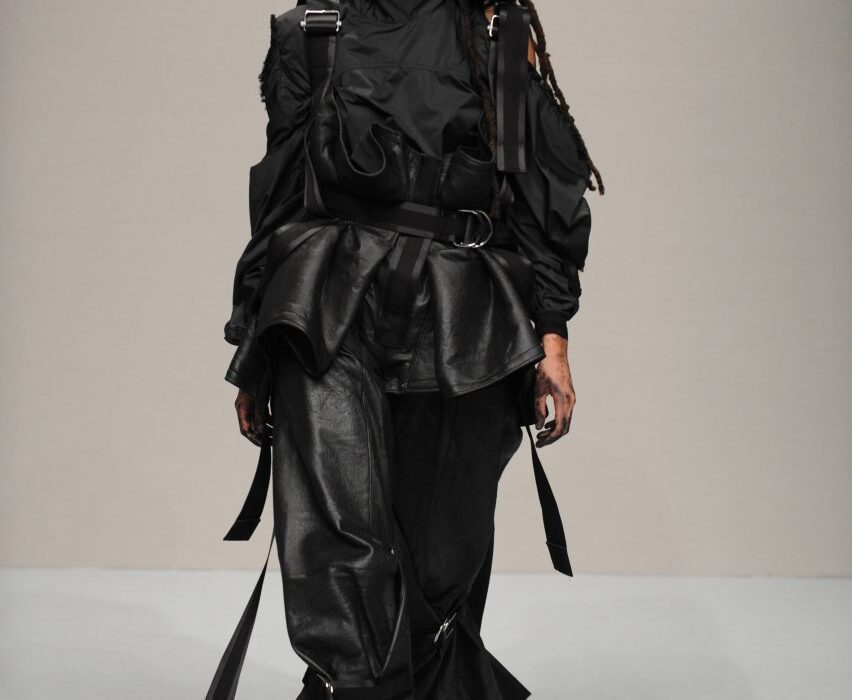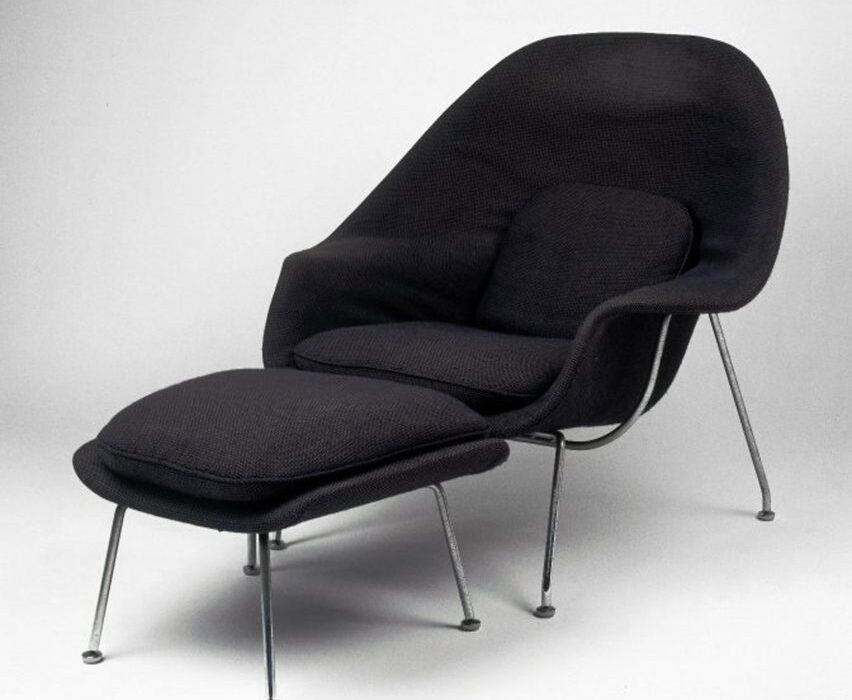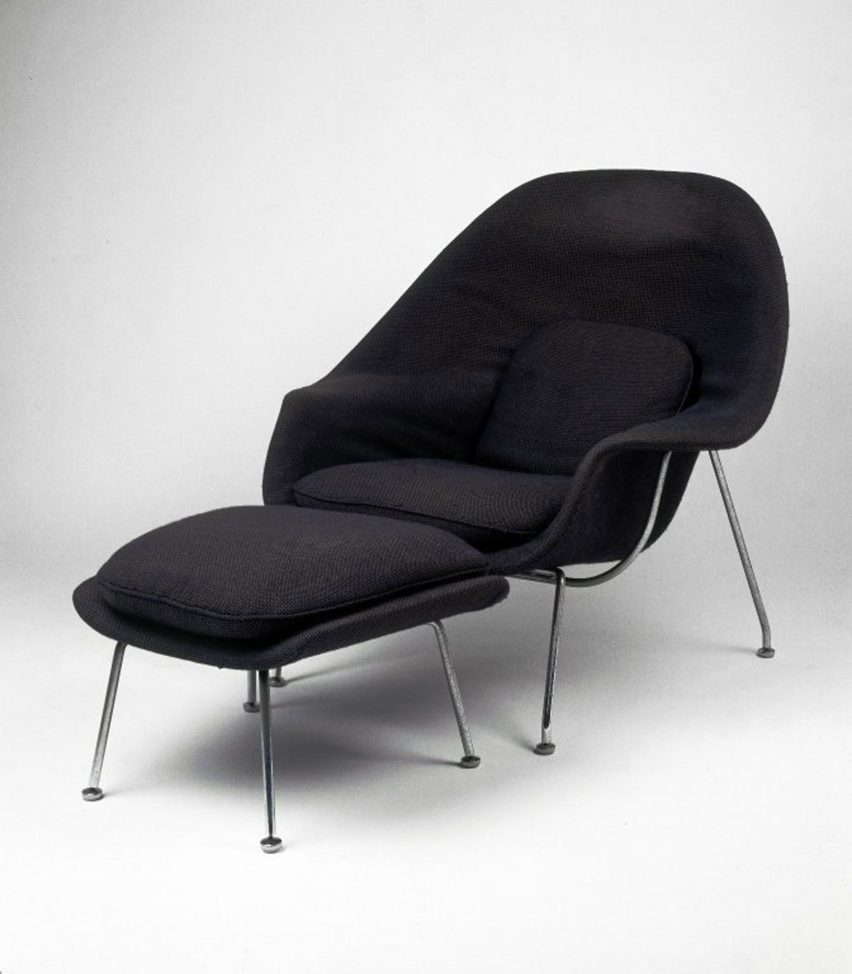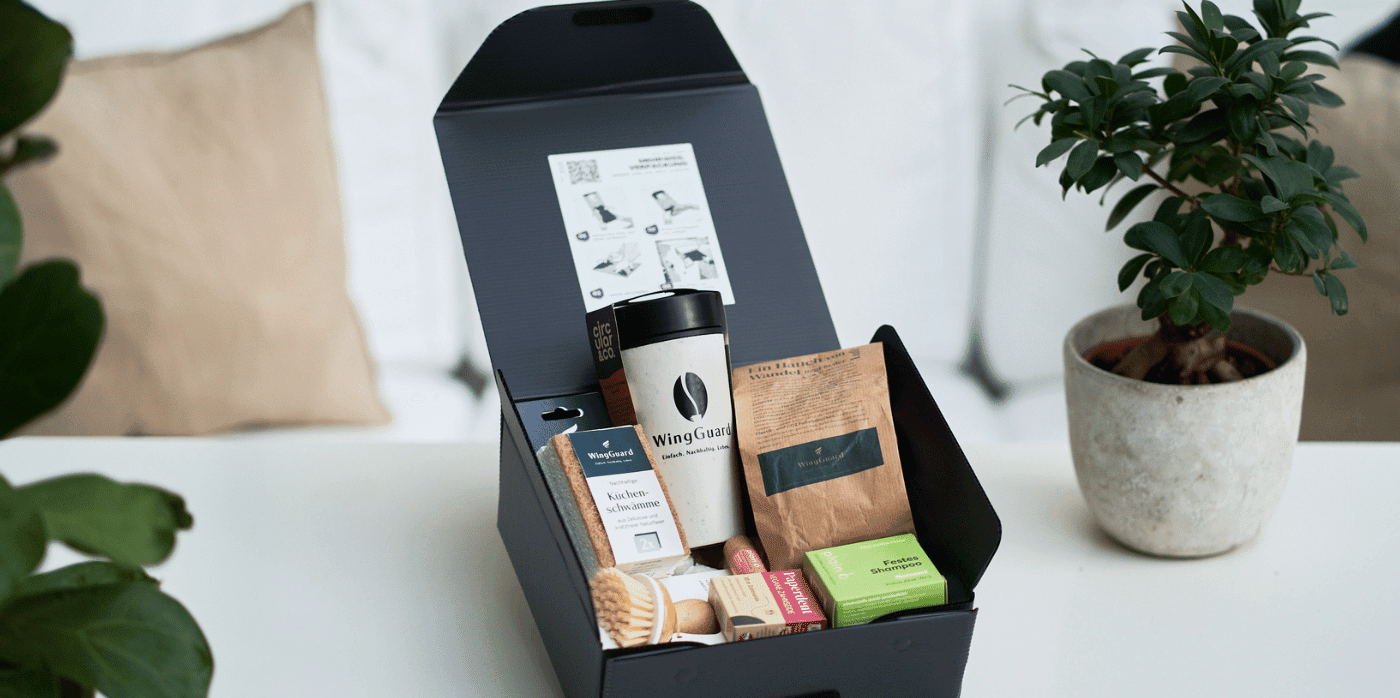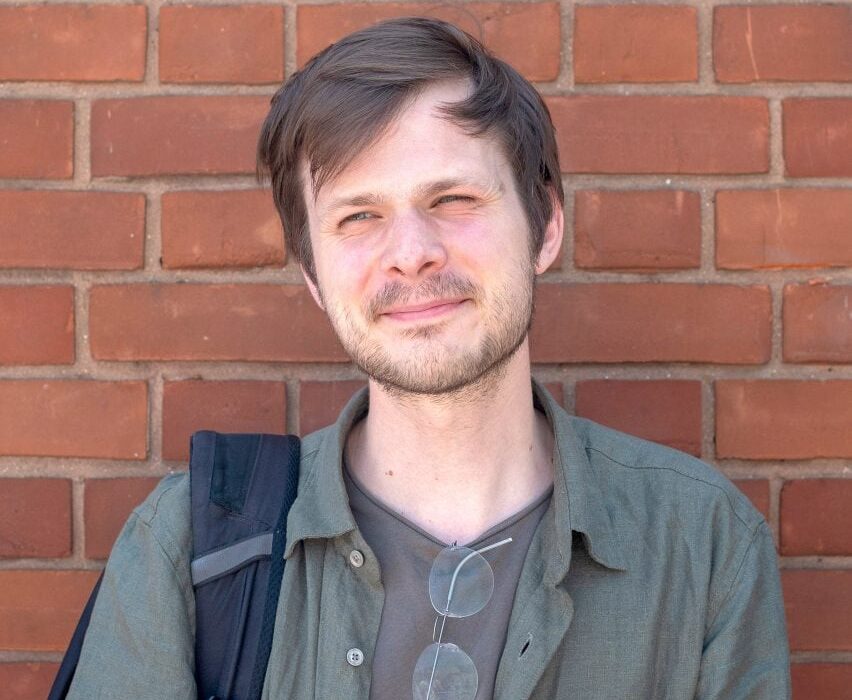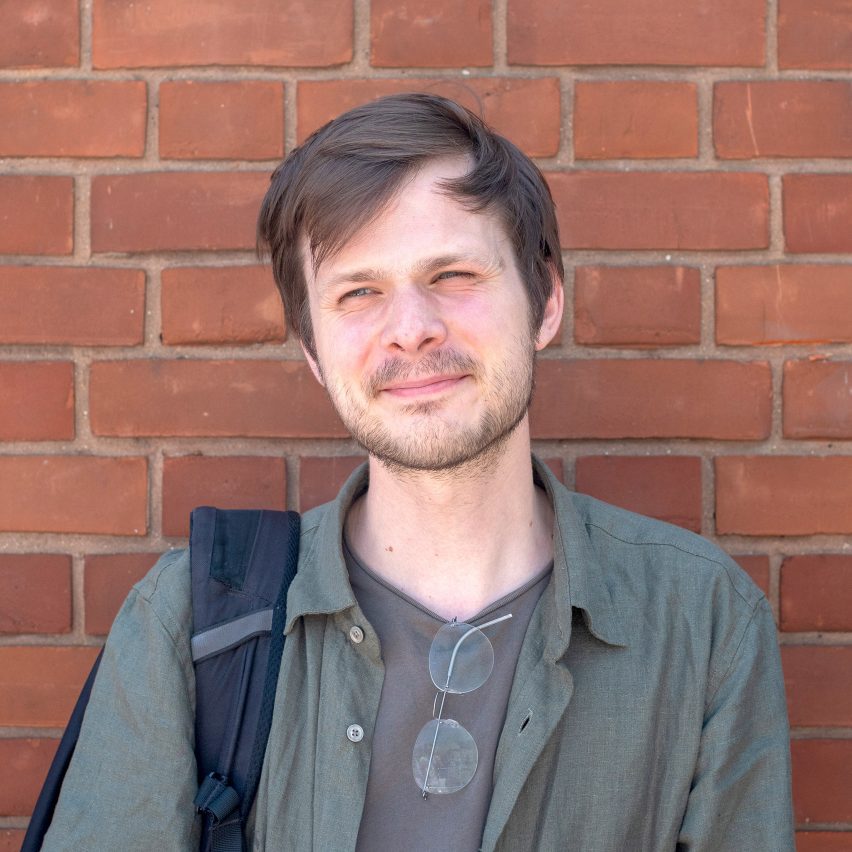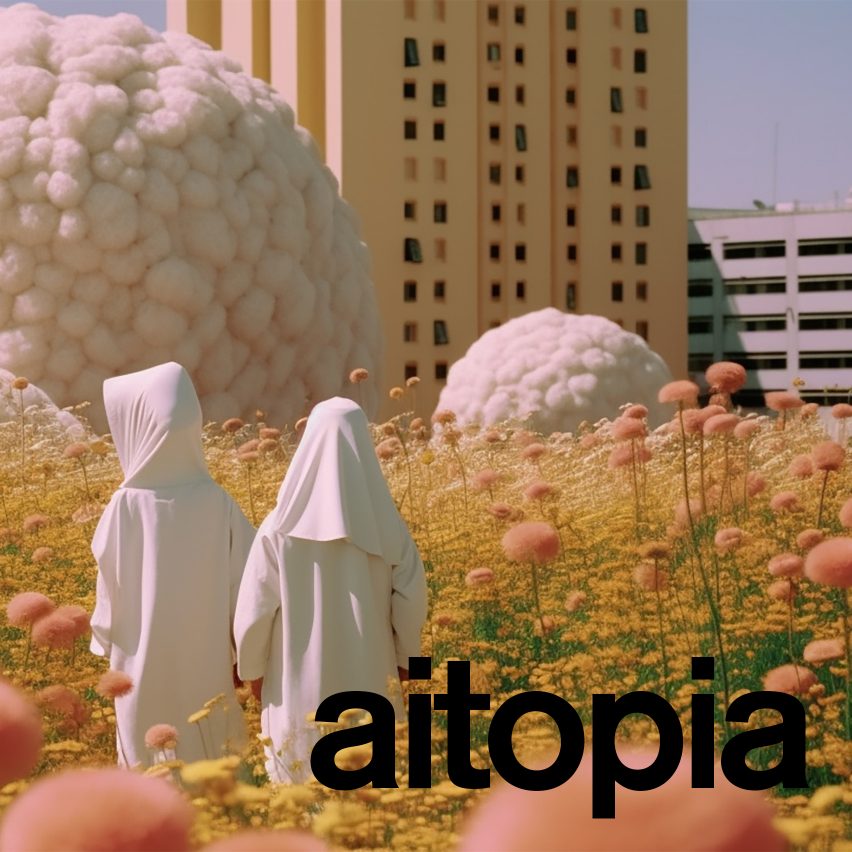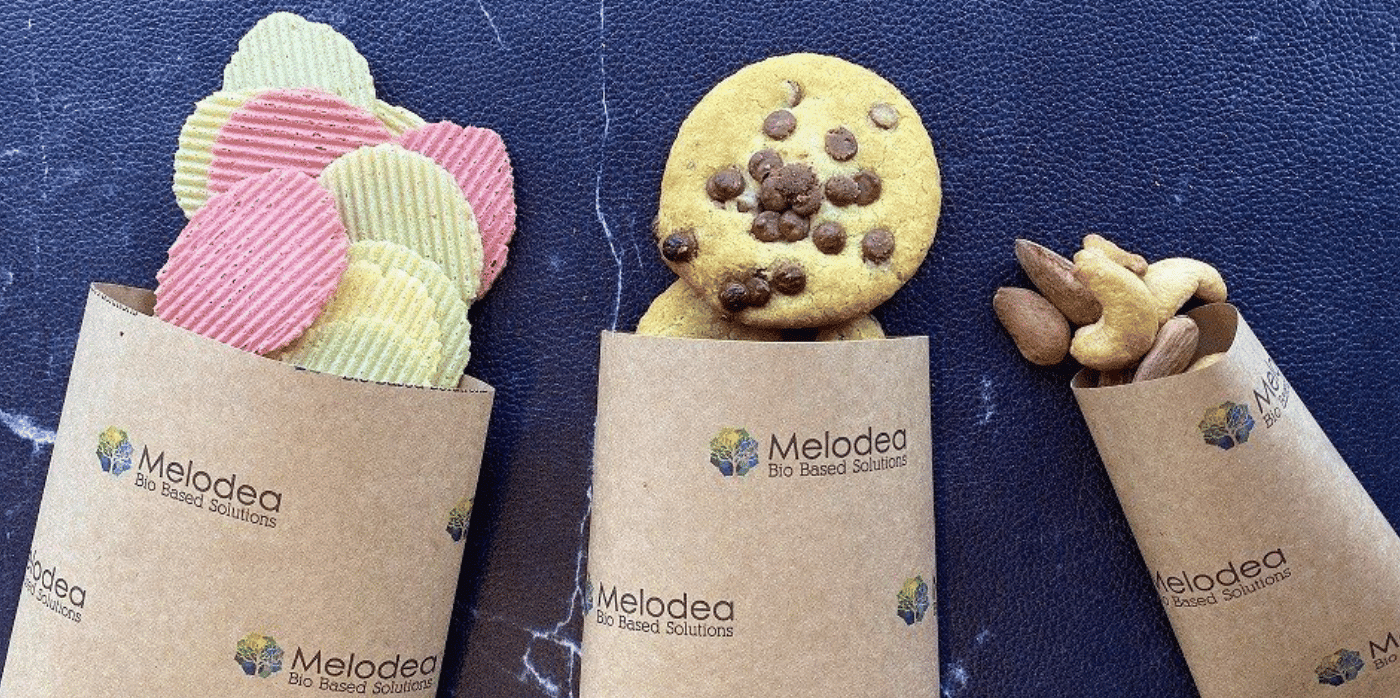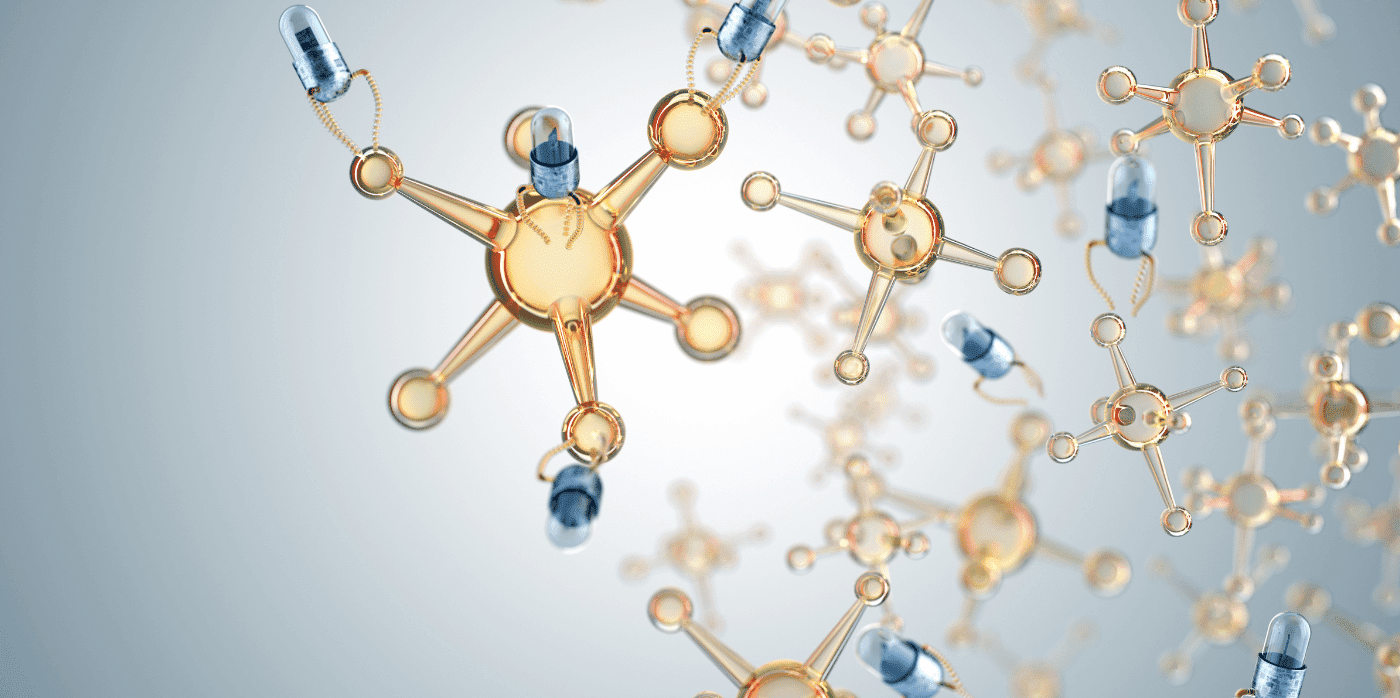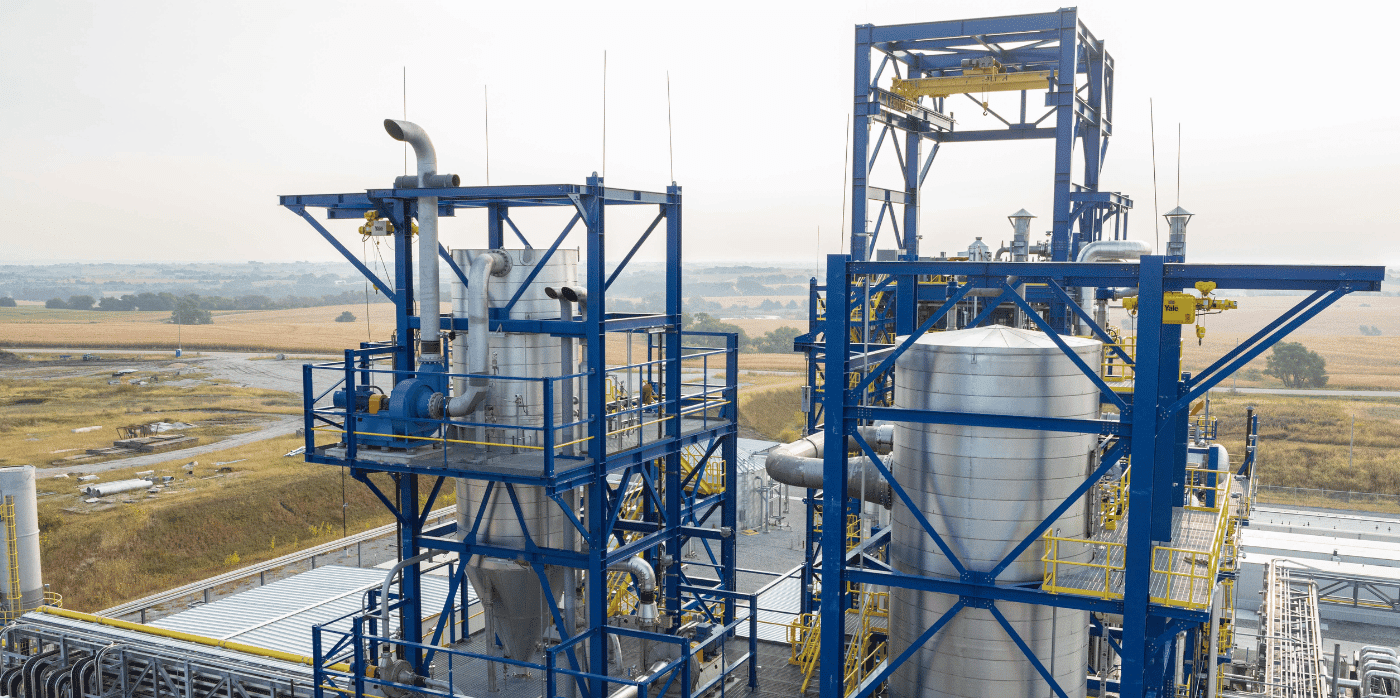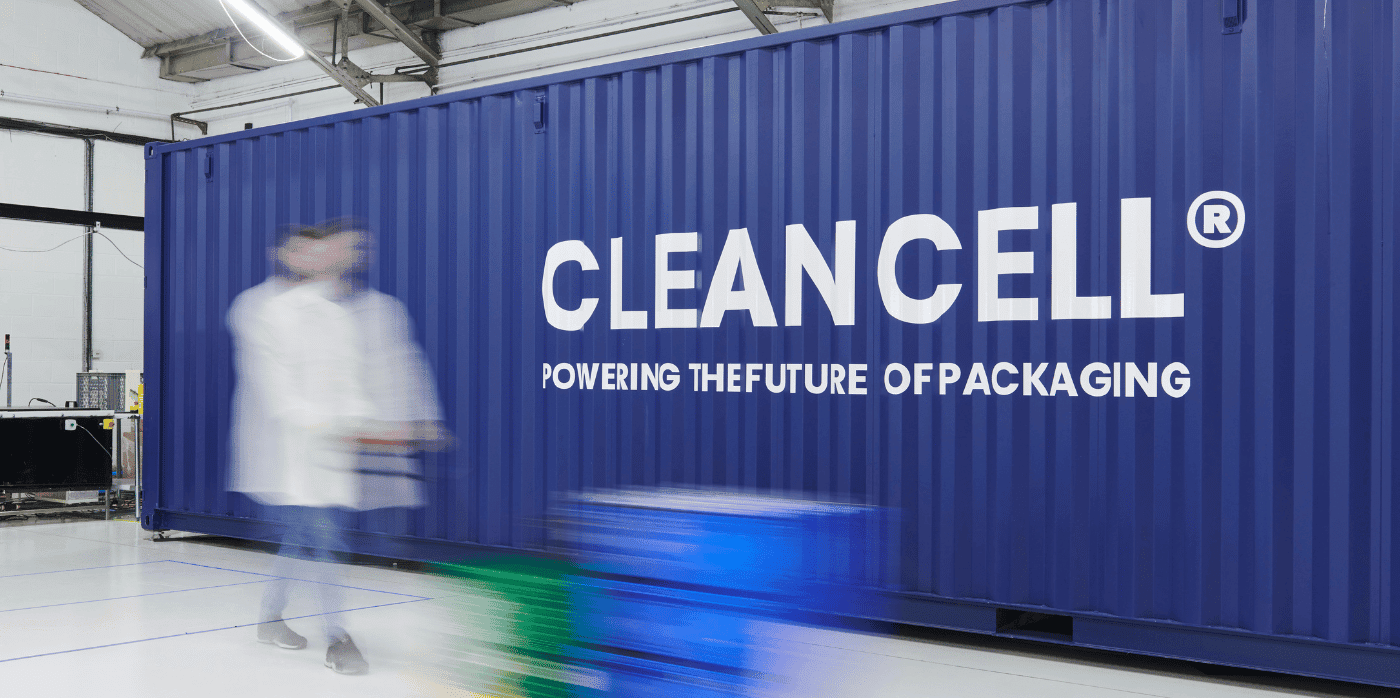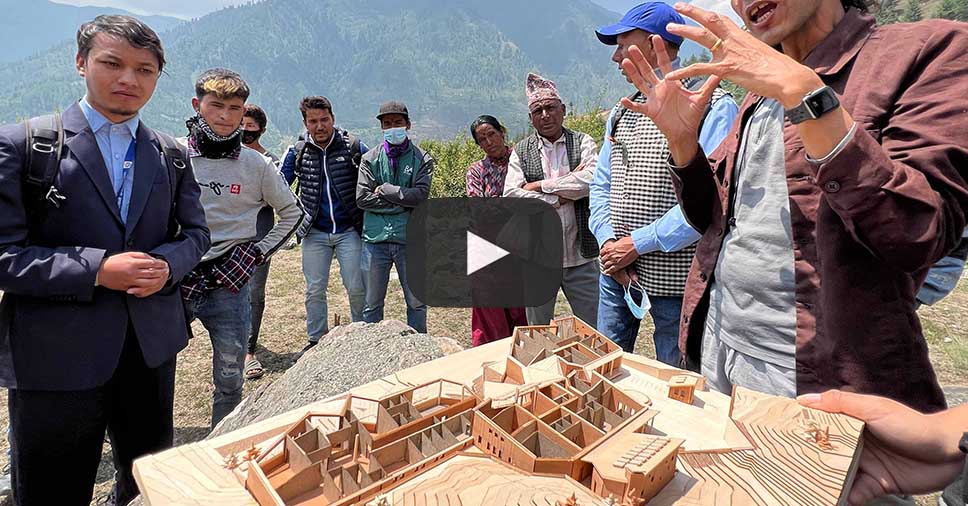Materials “have so much more to give” says Bonnie Hvillum
Materials can become a much bigger part of our everyday lives and the way we see the world if people are willing to give up mass production, Natural Material Studio founder Bonnie Hvillum tells Dezeen in this interview.
Hvillum and her Copenhagen-based design and research studio have been pushing at the boundaries of what’s possible with different materials since 2018.
From charcoal-based garments to crockery made of surplus seafood shells, Natural Material Studio creates bespoke products using its own-developed biomaterials.
“Mass-produced materials are so homogenous”
“I prefer working from a ‘leftover’ kind of aspect,” explained Hvillum, whose ethos revolves around a circular approach.
“I want materials to play an active role in our way of understanding the world,” she told Dezeen. “I feel like we have become too familiar and comfortable.
“It’s become too convenient with mass production – mass-produced materials are so homogenous and so refined. Machinery textiles are just the same when they come out, there’s no variation,” the designer added.
“We’ve had an industrial process where materials have become quite neutral, in a way. I just feel like they have so much more to give and they can be part of shaping how we think, talk about and perceive the world.”
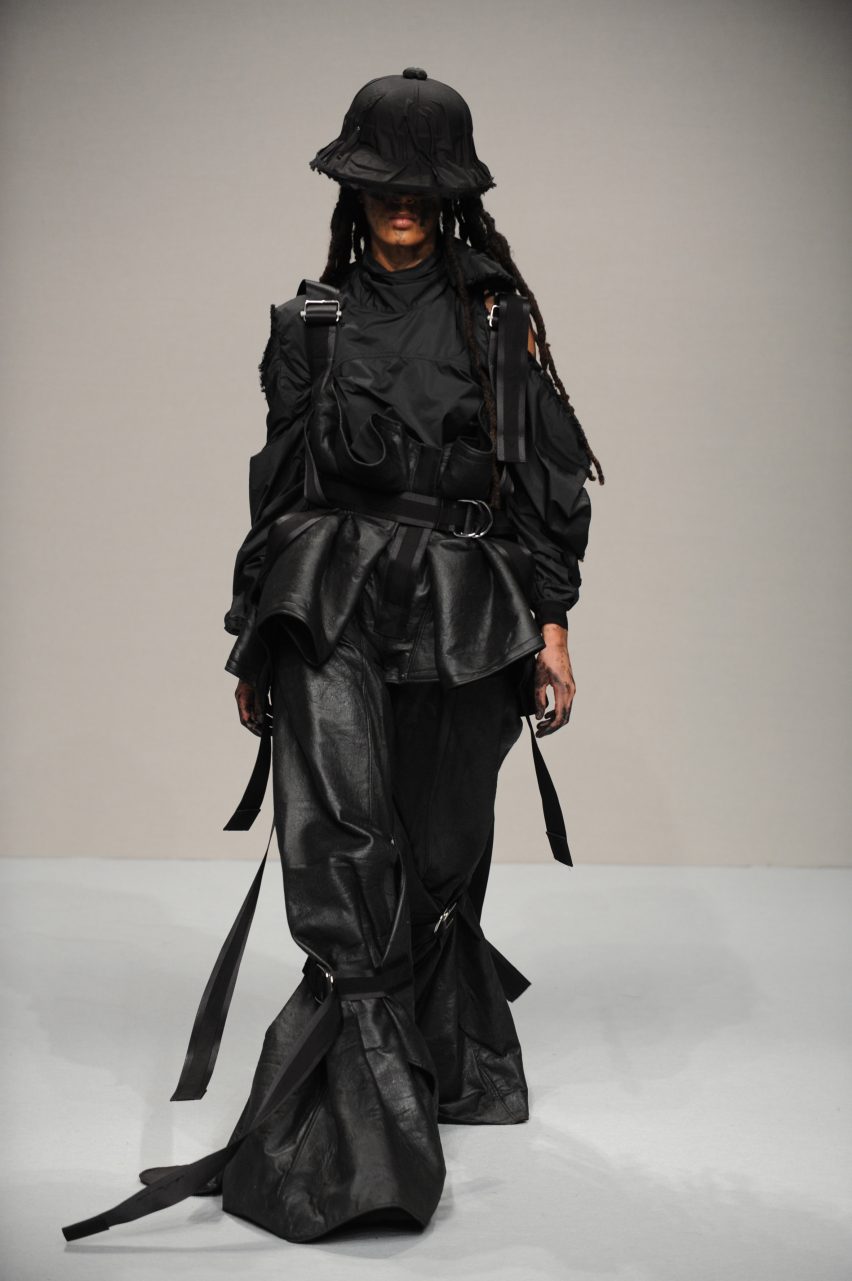
Natural Material Studio uses a combination of simple mechanical machinery – such as a process similar to “whipping cream” when creating its biodegradable B-foam – and more manual techniques.
For example, Procel is a home-compostable, protein-based bioplastic of natural softener and pigments developed by the studio that is made into sheets using hand casting.
“It’s the handcrafted aspects that make the materials so special,” said Hvillum, referencing the random and unique patterns that emerge on the surface of the materials produced by the studio.
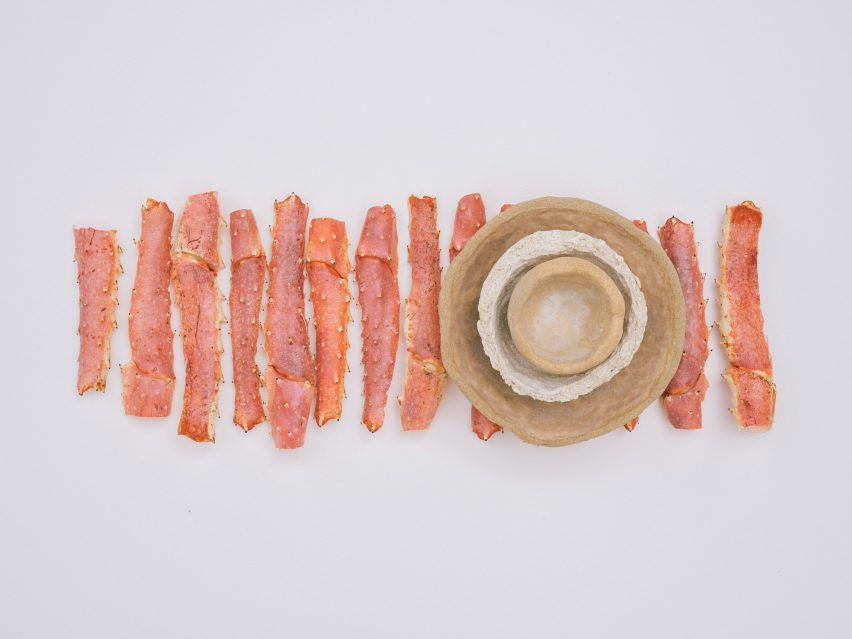
Hvillum’s belief is that this approach to making things can highlight the inherent value in their materiality. Sustainable design, she said, should only be “a base point”.
“I’m more curious to talk about what these materials actually do,” she added.
“How they affect us, what they make us think and do and how they can be part of transforming the world instead of just [approaching design] with this linear thinking of replacing materials with existing ones – although of course that is also needed.”
“I needed that connection with the physical world”
Educated primarily as an interaction designer, Hvillum previously founded a consultancy called Social Design Lab.
The now-defunct company assisted professional organisations, including political parties, with “how they could think more holistically, or ‘circular’, as we call it today, in all aspects of resources including human and material resources,” according to the designer.
“I wasn’t critical of things. It was very much facilitating processes and advising and strategies and stuff. I needed that connection with the physical world,” reflected Hvillum, explaining her decision to launch Natural Material Studio.
Despite the shift, Hvillum stressed that human interaction is still at the core of her practice.
“I’m very curious about and absorbed in what we could almost call the cognitive aspects of these unconscious processes that we have in our brain. Like, why do we experience some materials in this way and others in that way?”
During the most recent edition of Milan design week, the studio showcased Brick Textiles – stretchy panels made from a combination of Procel and highly porous repurposed bricks that were classified as waste after demolition projects.
The project, which is defined by uncharacteristically “soft” bricks, proposes fresh ways of thinking about an existing resource, according to Hvillum.
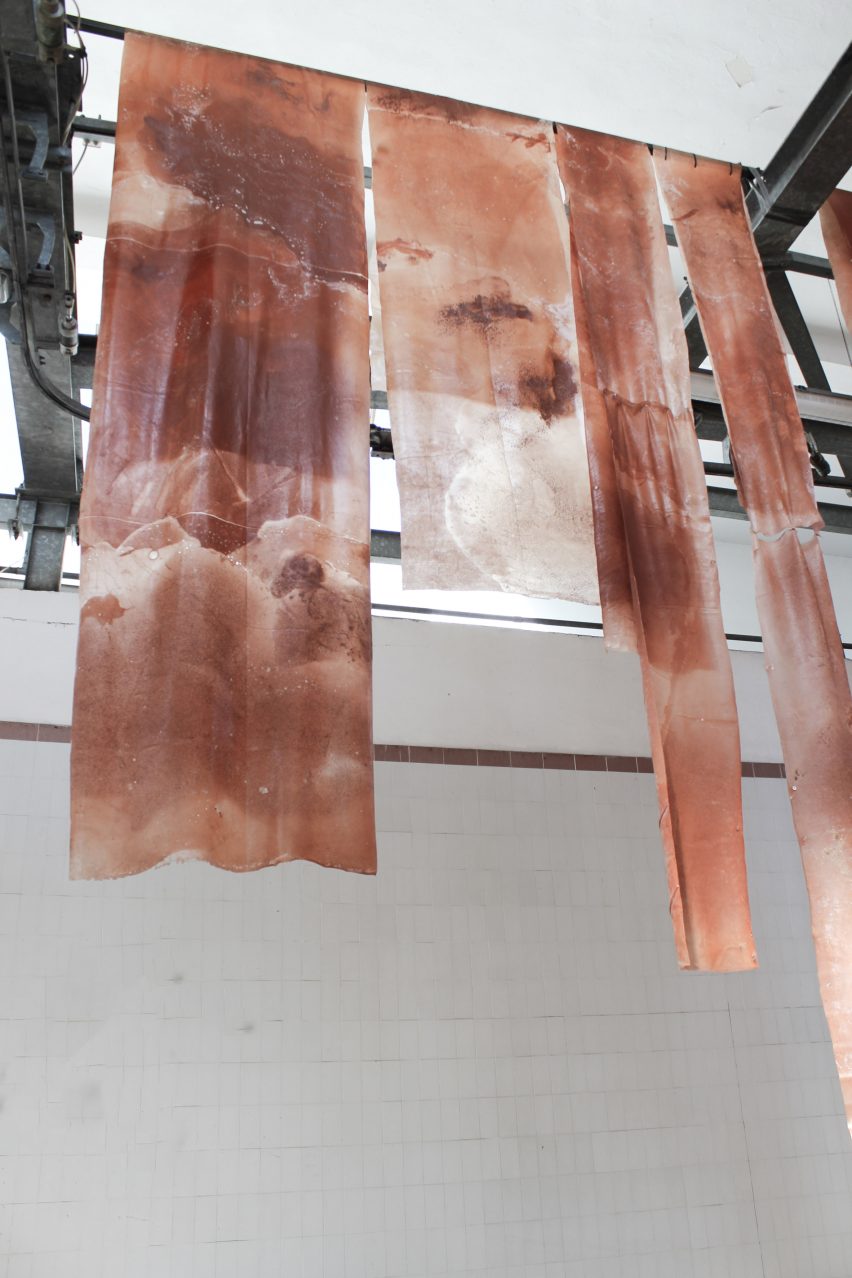
Hvillum is optimistic that a change in the way consumers and designers think about materials is possible.
“It’s so inspiring speaking to young people because they really see the world differently,” she said.
“These changes that we’re seeing around social equality – fluidness in terms of genders, for example – all these things are also very inspiring when we talk about design and architecture and art, because it makes us start to understand that these fields can be fluid and equal, too.”
“I feel these movements that we’re seeing on the more cultural and societal and social levels could actually inform us in ways within design and architecture – but only if we are listening.”
The photography is courtesy of Natural Material Studio.
Dezeen In Depth
If you enjoy reading Dezeen’s interviews, opinions and features, subscribe to Dezeen In Depth. Sent on the last Friday of each month, this newsletter provides a single place to read about the design and architecture stories behind the headlines.

